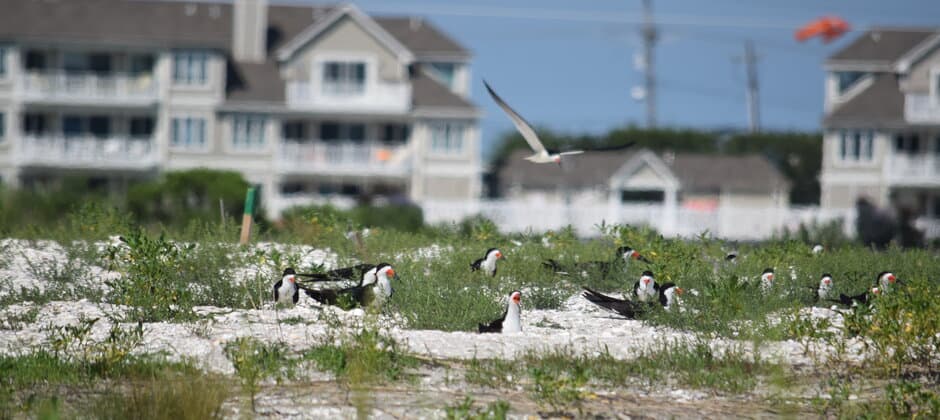Share this article
TWS2021: Dredged material provides nesting areas for birds
Sediment dredged from the bottom of estuaries to improve shipping passages for boats can be formed into good island nesting habitat for coastal birds like black skimmers.
Black skimmers are considered endangered in New Jersey, due in part to the loss of optimal nesting habitats. These birds normally nest on barrier islands of the state, but they also used to nest on the sandy shoals on the edge of salt marshes. However, in recent years, sea level rise and storm surges have swallowed much of this habitat in the state.
In Cape May County, the U.S. Army Corps of Engineers has taken material they dredge from the inshore canals to clear shipping passages and formed raised areas that birds like black skimmers (Rynchops niger) can use as alternative nesting habitats. They built two of these raised platforms from the materials: one on Ring Island in 2014, and Great Flats in 2018. These areas also help build resilience to storm surge and mitigate some of the losses of salt marsh to sea level rise.
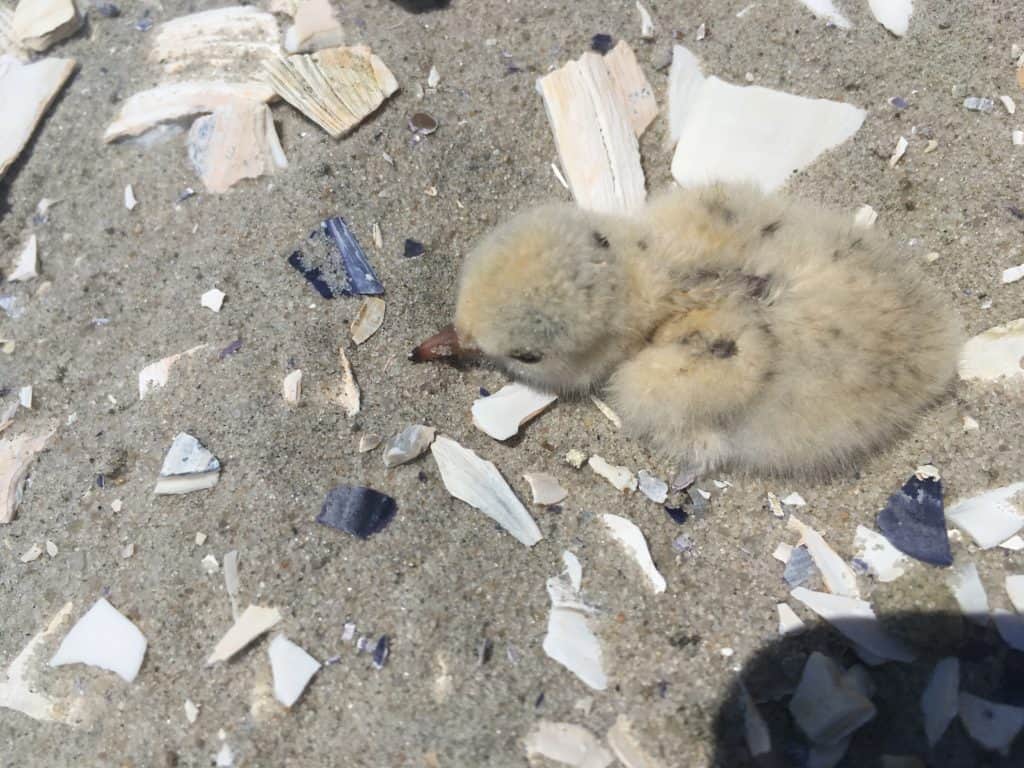
A least tern nestling on dredged material. Credit: The Wetlands Institute
In research presented at The Wildlife Society’s virtual 2021 Annual Conference, TWS member Samantha Collins, a research scientist with The Wetlands Institute, a nonprofit organization focused on studying, preserving and protecting wetlands, and her colleagues tracked the occupancy of black skimmers and other birds like common terns (Sterna hirundo), least terns (Sternula antillarum) and American oystercatchers (Haematopus palliates) on these two islands.
They also tracked how the elevation of these dredged materials changed overtime, as well as the type of vegetation that grew on them.
The researchers reported more than 50 species of birds on these nesting platforms, as well as diamondback terrapins (Malaclemys terrapin) and horseshoe crabs (Limulus Polyphemus). They noted both crabs and turtles laying eggs on the platforms.
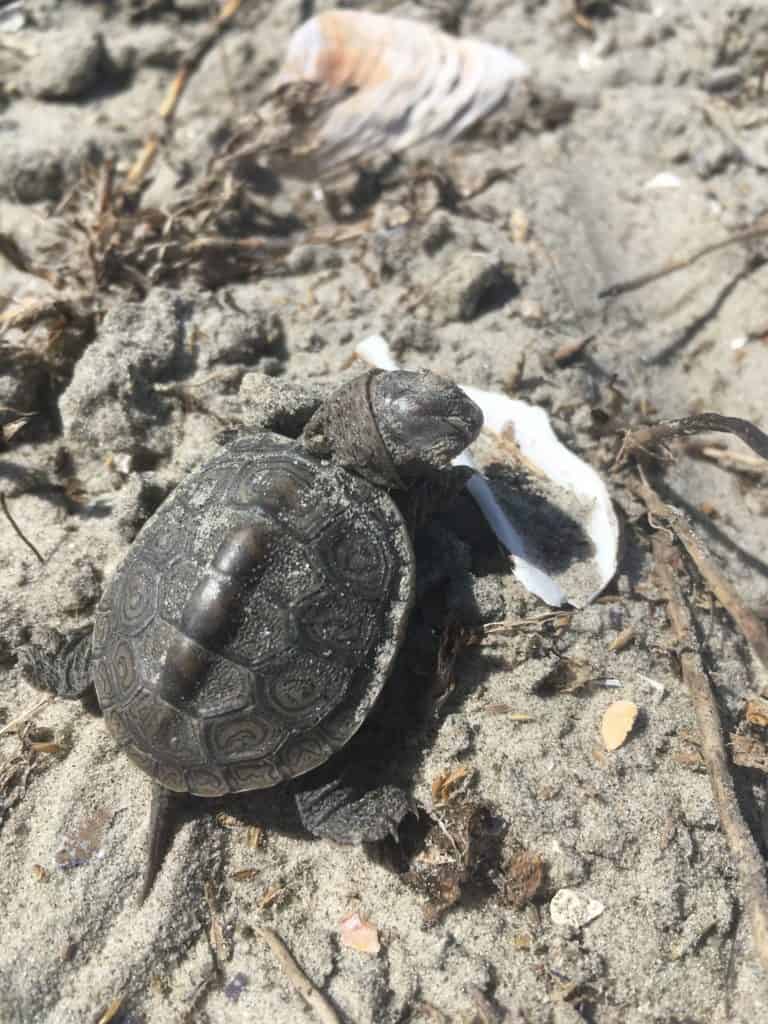
Diamondback terrapins were also found nesting on dredged materials. Credit: The Wetlands Institute
On Ring Island, the researchers documented both black skimmers and least terns, which are also considered endangered in New Jersey, and American oystercatchers and common terns, considered species of greatest conservation need in the state.
“It took a couple of years for [the birds] to find it, but they eventually did nest on Ring [Island],” Collins said.
On the newer Great Flats, the researchers have so far only documented oystercatchers nesting, but Collins said there may be a lag time in birds finding these islands. “At Great Flats, some of the target species still haven’t located it yet,” she said, though it’s also possible they found it but didn’t select it for other reasons.
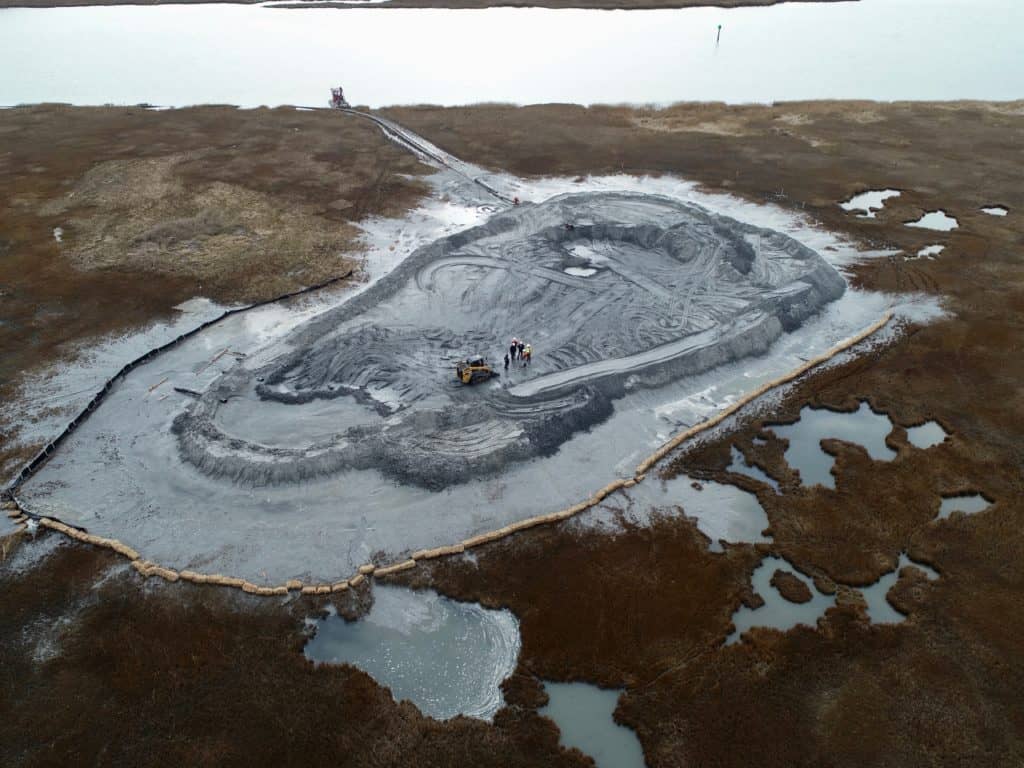
Great Flats is an elevated platform created out of dredged material in 2018. Credit: U.S. Army Corps of Engineers
The team also found that the dredged material may only provide suitable nesting habitats for a few years. After that, some vegetation can take over the area and nesting coastal birds are less attracted. But the Army Corps renourished Ring Island in 2018 and Great Flats in 2021 with further sandy dredged material to get rid of the vegetation and maintain the target elevation.
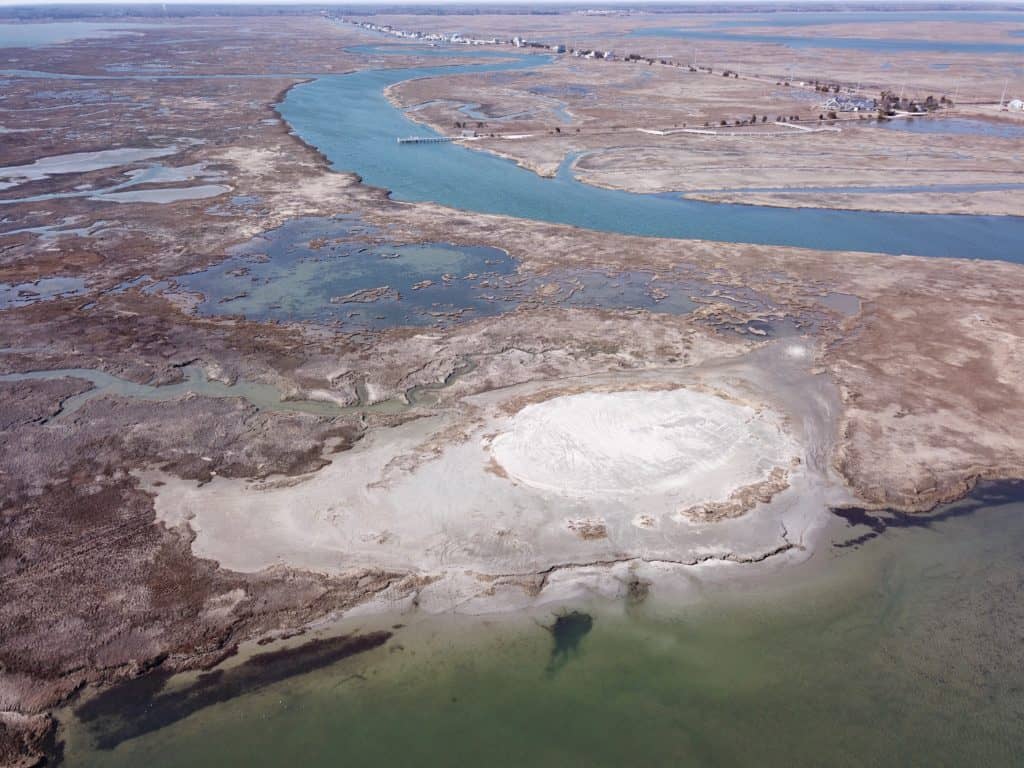
The platform on Ring island was created in 2014 out of dredged materials. Credit: U.S. Army Corps of Engineers
Formerly, the dredged materials were dumped in a disposal facility, while the practice of dumping them on the marsh was prohibited. But now these materials not only provide resiliency to sea level rise, but also benefit wildlife there.
Photo 5: The platform on Ring island was created in 2014 out of dredged materials. Credit: U.S. Army Corps of Engineers
Header Image: Black skimmers nest in New Jersey on dredged material. Credit: The Wetlands Institute



